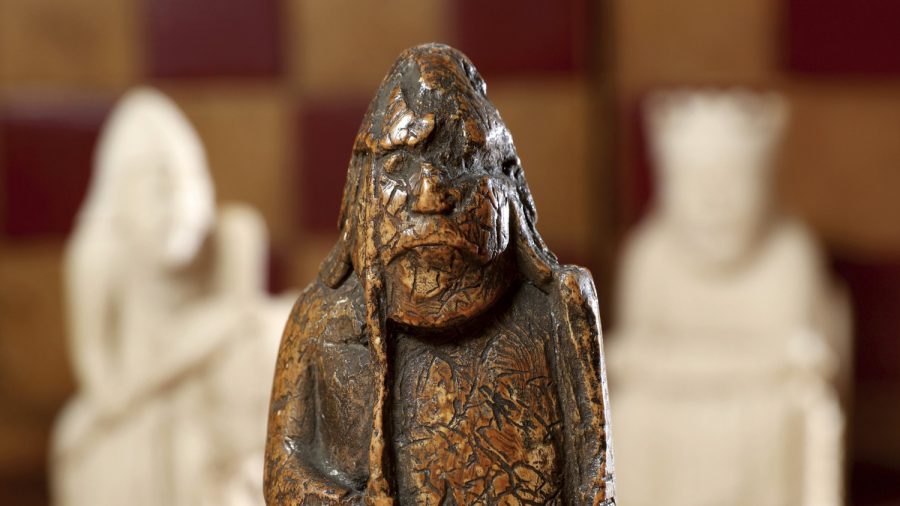LONDON—A chess piece purchased for a few pounds by an antiques dealer in Scotland in 1964 has been identified as one of the 900-year-old Lewis Chessmen, among the greatest artifacts of the Viking era.
Sotheby’s auction house said Monday that the chess piece is expected to bring between $670,000 and $1.26 million at an auction next month.
The Lewis Chessmen are intricate, expressive chess pieces in the form of Norse warriors, carved from walrus ivory in the 12th century.

A hoard of 93 pieces was discovered in 1831 on Scotland’s Isle of Lewis. It is now held in both the British Museum in London and the National Museum of Scotland in Edinburgh—but five of the chess pieces were missing.
The 3 1/2-inch piece to be auctioned July 2, the equivalent of a rook, is the first of the missing chessmen to be identified. It was passed down to the family of the antiques dealer, who did not realize its significance.
Sotheby’s European sculpture expert Alexander Kader said the find is “one of the most exciting and personal rediscoveries to have been made during my career.”
How much would you pay for this Lewis chess piece? ♜♖
It's going on auction in Sotheby's and is valued at £600,000 – £1M ???? #r4today pic.twitter.com/a3KFpURmZK
— BBC Radio 4 Today (@BBCr4today) June 3, 2019
These chess pieces were believed to be crafted in Trondheim, Norway, from 1150 to 1200 AD, according to The British Museum. During that historical period, the Western Isles, where the chess pieces were found, were still under the rule of the King of Norway. These chess pieces have witnessed a unique and strong cultural bond between the kingdoms of the British Isles and Scandinavia during the High Middle Ages.
Playing chess was first invented in India at around 500 BC. The game made its way into European Christendoms via the Islamic world, and was able to enjoy ever-growing popularity among the Europeans. It game was adapted to reflect medieval European society, giving it the form that we are familiar with today.

Of the 93 pieces—enough to make as many as four sets—known to us today, 11 pieces are kept at the National Museum of Scotland in Edinburgh, and 82 are in the British Museum. The hoard consists of chess pieces made from of elaborately worked walrus ivory and whales’ teeth in the forms of seated kings and queens, bishops, mounted knights, standing warders, and pawns in the shape of obelisks. The chessmen represent a Medieval social hierarchy and convey the qualities and status of those represented through their dress and gestures.
According to the British Museum, the Lewis Chessmen were found in the area near Uig on the Isle of Lewis sometime before April 11, 1831. The exact location where they were unearthed seems to have been a sand dune. The chess pieces might have been placed in a small, drystone chamber. It is believed they originally belonged to a merchant traveling from Norway to Ireland, who decided to buried for safekeeping on route to be traded.
The Associated Press contributed to this report.


